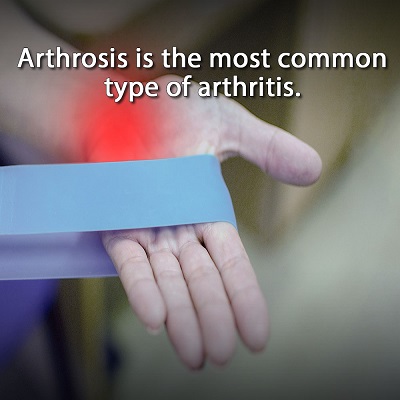 Most people know about arthritis, but there’s also a condition called arthrosis, which is more commonly known as osteoarthritis. They both affect the body’s mobility of joints, ligaments, and bones, so they’re categorized as rheumatic diseases. They have the same symptoms, but they differ in causes and treatments. So, how do you know the distinction between the two to avoid confusion?
Most people know about arthritis, but there’s also a condition called arthrosis, which is more commonly known as osteoarthritis. They both affect the body’s mobility of joints, ligaments, and bones, so they’re categorized as rheumatic diseases. They have the same symptoms, but they differ in causes and treatments. So, how do you know the distinction between the two to avoid confusion?
What is Arthritis?
Arthritis is an inflammatory disease that occurs in one or more joints. It’s the swelling of the joint along with the muscles, skin, and other tissue. According to the CDC, an estimated 54.4 million adults in the US have arthritis, and it may occur in people of all ages, even in children and young adults.
Arthritis may also affect internal organs, such as the heart, lungs, kidneys, and sometimes the skin because of inflammation. Arthritis is a common leading cause of disability among Americans, particularly women, as they get older.
The symptoms can be mild or severe and may worsen over the years. These include:
- Joint pain
- Swelling
- Redness
- Stiffness
- Decrease range of motion
Some factors that increase your risk of developing arthritis include the following:
- Genes
- Age
- Gender
- Weight
- Injury
- Infection
- Occupation
- Smoking
Arthritis has different types and other related conditions:
- Arthrosis (osteoarthritis)
- Rheumatoid arthritis
- Gout
In essence, arthritis is the umbrella term, and arthrosis is the most common type of arthritis.
What is Arthrosis?
Arthrosis or osteoarthritis is a type of arthritis that’s non-inflammatory and degenerative. It happens when the cartilage of the joints wears out and breaks down over time, usually in the knees, hands, hips, and neck. It’s often due to aging, an injury, and abnormal wear and tear of the cartilage. People who engage in more extreme physical activities are more likely to develop arthrosis earlier than expected.
The disease is common in both men and women, but it’s more likely to occur in women after the age of 45. Unlike arthritis, arthrosis affects only the joints, not internal organs.
The symptoms of arthrosis are similar to arthritis, including stiffness of the joints, limited range of motion, swelling, and redness on the skin of the affected area.
Diagnosis and Treatment
Doctors diagnose arthritis and arthrosis by looking at the patient’s medical history and performing a physical examination. They may conduct some tests to examine the structure of the affected joints, including the following:
- Laboratory tests – Tests performed on body fluids, such as blood, urine, and joint fluid that may help to determine what type of arthritis you may have.
- X-ray – Helps to visualize bone and determine the damaged or broken cartilage.
- MRI scan – It’s used to check a more detailed image of the connective tissues, such as tendons and ligaments.
- Ultrasound – It uses soundwaves to see the tissue, ligaments, and bones.
- Arthroscopy – This test uses a thin tube that contains light and a camera (arthroscope) to look at the joint. It helps evaluate the degenerative changes and detect bone diseases or tumors.
Managing the symptoms is the focus of arthritis and arthrosis treatments since they can’t be cured. Treatments vary depending on the type of arthritis you have, and your doctor can create a plan for you. You may need to trial a couple of treatments before you find the one that best works for you.
Treatments may include the following:
- Therapy or Exercise – You may need to undergo physical or occupational therapies to manage your symptoms. Exercise helps strengthen the muscles surrounding the joint, improves the range of motion, and decreases the stiffness of the joint.
- Medications – Over-the-counter medicines, including pain killers and nonsteroidal anti-inflammatory drugs (NSAIDs), provide relief. Applying some counterirritants, such as creams and ointment, may also help relieve the aching joints.
- Surgery – You may need to undergo surgery if medications and therapies don’t work. Surgery procedures include arthroplasty, joint repair, and joint fusion.
As you can see arthritis and arthrosis are quite similar to each other. However, people are more likely to specifically develop the latter because cartilage normally wears out as you age. While they can’t be cured, you can take measures to reduce your risks of developing arthritis and arthrosis.
Strive to live a healthy lifestyle, eat healthily, manage your weight, control your sugar intake, exercise, and quit smoking. Early intervention can also help slow down the progress of the disease, so talk to your doctor if you experience any of the symptoms above.






